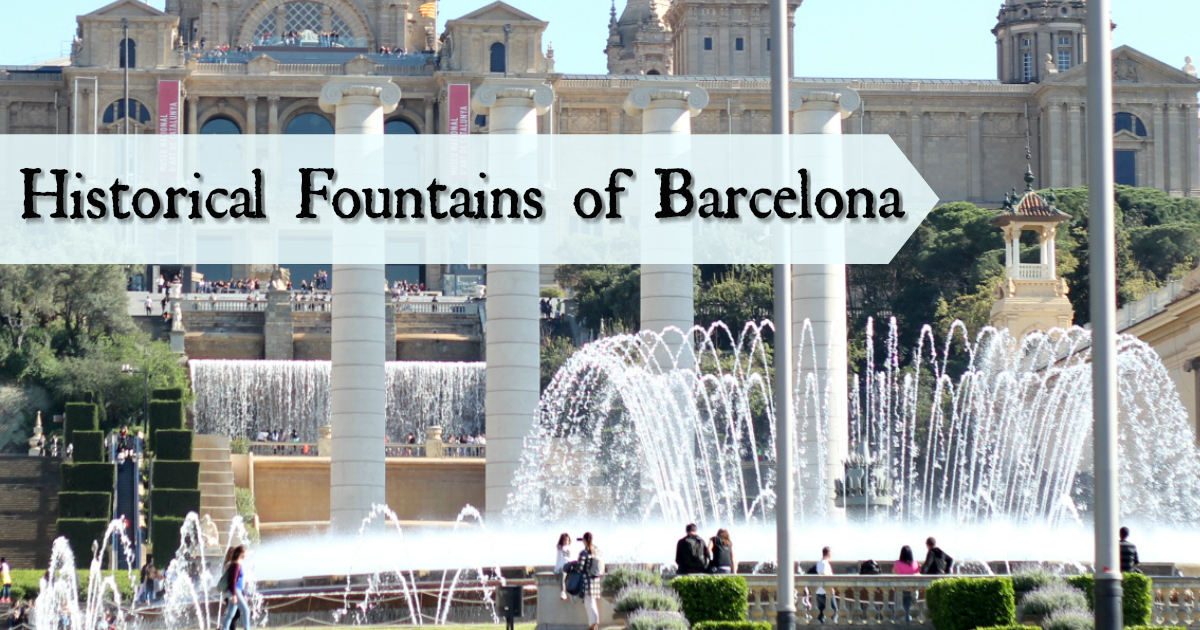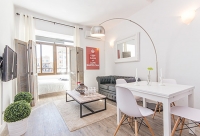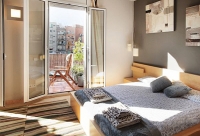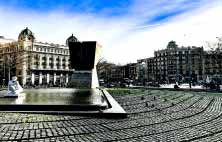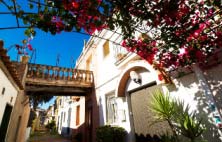1. Middle Ages
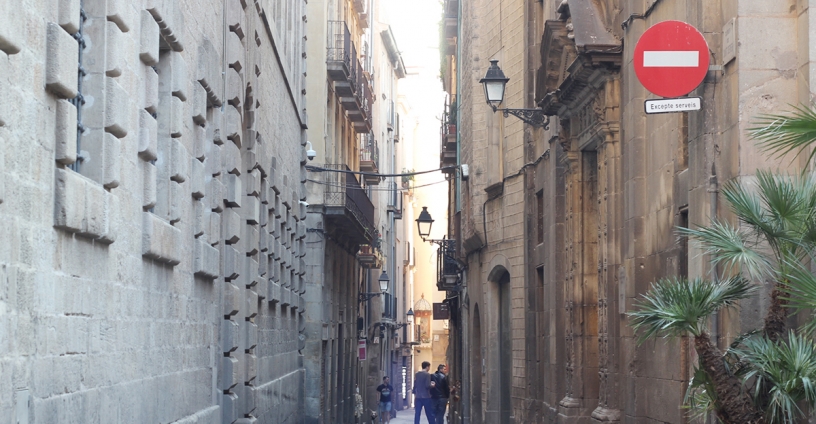
In the Middle Ages, the Gothic Quarter was the heart of Barcelona with about 25,000 inhabitants. At that time, fountains were created to end water shortages and make provisions during times of drought. Since then, about 600 drinking fountains have been built in different zones, at first only as a necessity — for humans as well as for horses. Ornamentation wasn't used until the 19th Century.
Font de Santa Anna (1356)
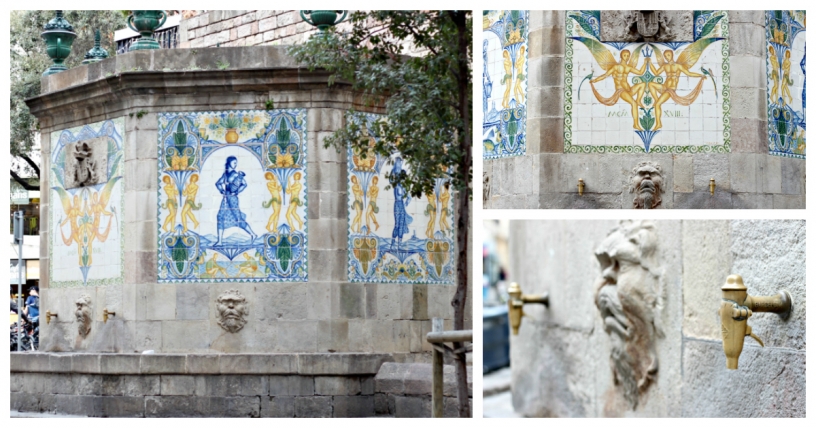
The Santa Ana Fountain is the first preserved fountain in Barcelona and is situated on Avinguda Portal de l'Àngel. It had no decoration when it was built and simply aimed to supply people and horses with drinkable water. In 1918, it was decorated with blue and yellow ceramic plates in the Catalan Noucentisme style. Figures, garland flowers and the emblem of Barcelona that emerged during the Middle Ages, embellish the oldest preserved fountain in Barcelona.
Font de Sant Just (1367)
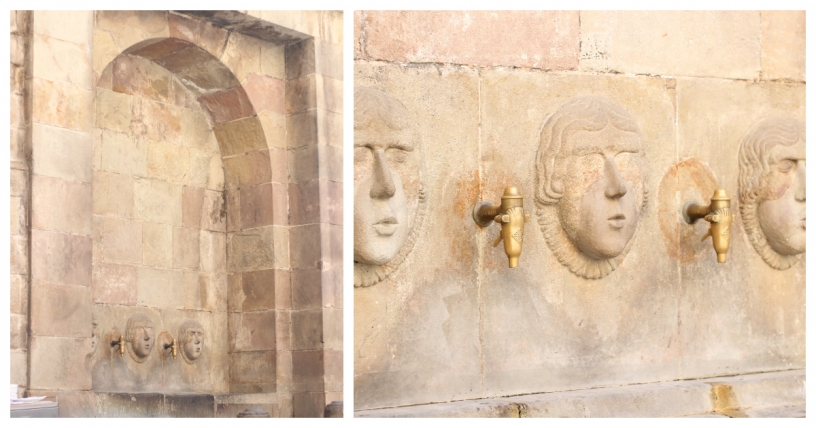
This water source was built in the gothic style and is situated near the Basilica of Saints Justus and Pastor. Three mascarons are facing the person who tries to drink from the golden water taps, and above you can see a figure of Sant Just, who is believed to be a Christian martyr that was persecuted and killed alongside his brother for their faith by Roman Emperor Diocletian.
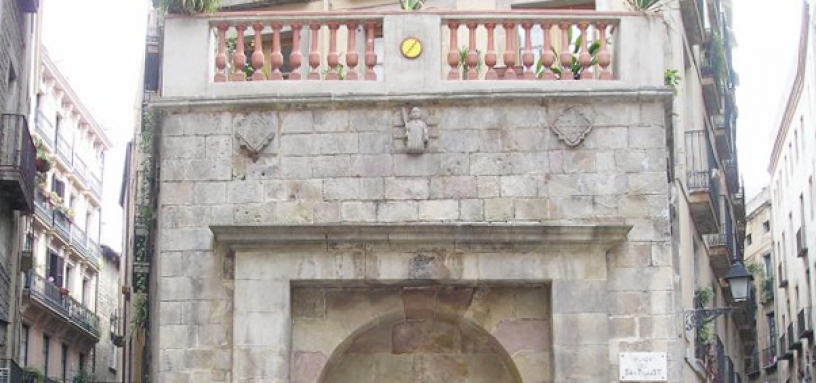
Sant Just stands between Barcelona’s and the Crown of Aragon's emblems. In 1831, a balustrade was added on top to decorate the fountain.
Font de Santa Maria del Mar (1403)
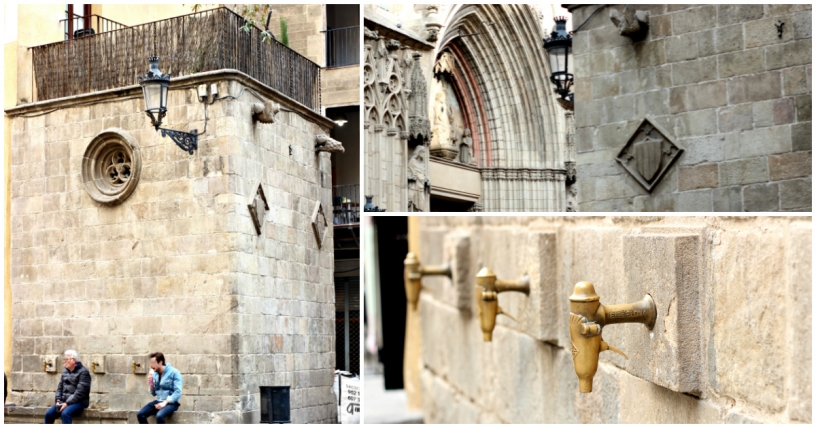
At first sight, this stone building in front of the iconic cathedral Santa Maria del Mar might not look like a fountain. Its low sink shows that it was mainly used for horses and, as you can see, nowadays people tend to have a short break on it.
It's decorated with a rose window on the one side facing the church, followed by two gargoyles and emblems of Barcelona on the other side. The third side has no ornamentation at all. This zone was formally known as the aristocratic quarter and is now frequented by tourists as well as locals who come to admire the breathtaking cathedral.
Font de la Casa de l'Ardiaca (16th Century)
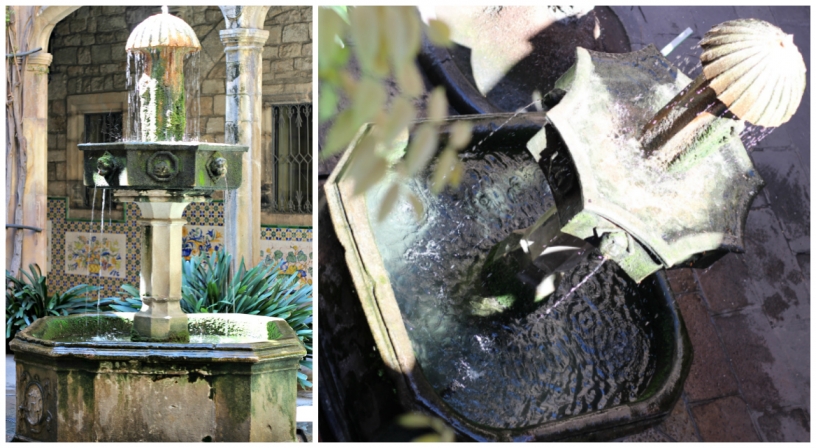
Close to Barcelona Cathedral, it's situated in a small house with the fountain in the middle. Columns are adorned around it, and the stairwells have access to the roof terrace where you have a nice view over the Gothic Quarter and can see the top of the cathedral.
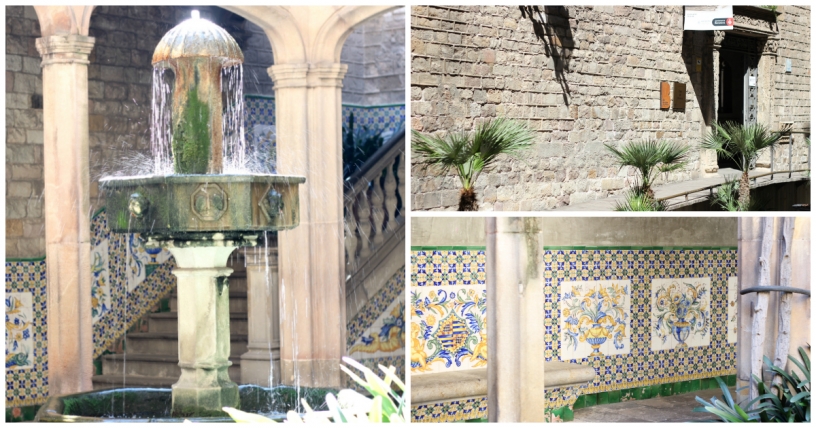
This little open-air house offers lovely details in each and every corner, so not only will the beautiful fountain amaze you, but also the colourful walls, which are decorated with ceramic plates; the interior; the exterior plants; and the rooftop, which allows you to look over the fountain from above.
2. Early-Modern Age
During this age, now with 100,000 inhabitants, Barcelona became a part of the new Kingdom of Spain. An unstable time of prosperity, crises, wars and the beginning of economic problems. The main events were the War of Succession and the Catalan Revolt, among others, so as a result not many fountains were built during this time.
Font de Portaferrissa (1680)
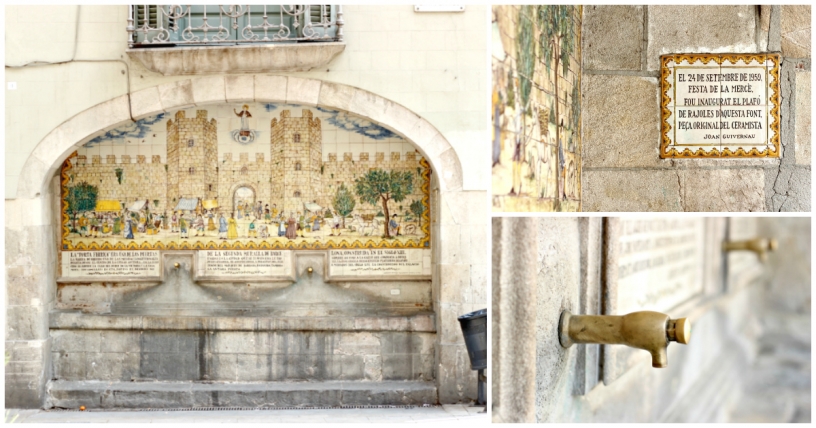
The artist of this fountain — which is situated in a street off the famous Rambla, close to one of the former gates of the city called Portal de la Ferissa — is unknown. Like the fountains mentioned before, it was decorated centuries after its construction.
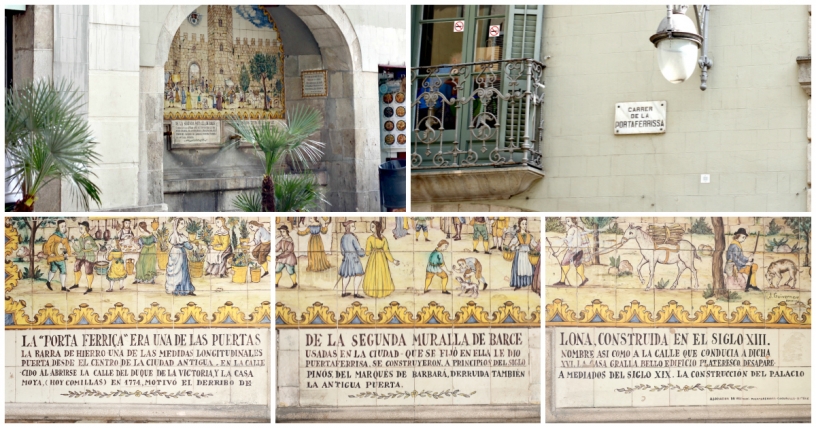
In 1959, it was decorated with ceramic tiles by Joan Guivernau to show the city during the 18th Century, with Joseph Oriol (Spanish Roman Catholic priest) floating over the city. Each plate tells the history of the fountain as written by Pere Voltes.
If you want to come work or have a holiday in Barcelona but you have a small budget, it's possible! Look at our cheap accommodations in Barcelona.We offer apartments of different types, renovated and well furnished in all areas of Barcelona!
3. Nineteenth Century
In this century, the walls that used to surround Barcelona were broken down and the city went through great economic developments. Due to Ildefonso Cerdá’s city extensions, known as the Eixample districts, Barcelona’s population rose rapidly. It became very popular to build and decorate fountains with sculptures. Artists began to design them not to create new water sources for the population, but rather to embellish the city itself. A majority of Barcelona’s monuments were built during this time.
Font d'Hèrcules (1802)
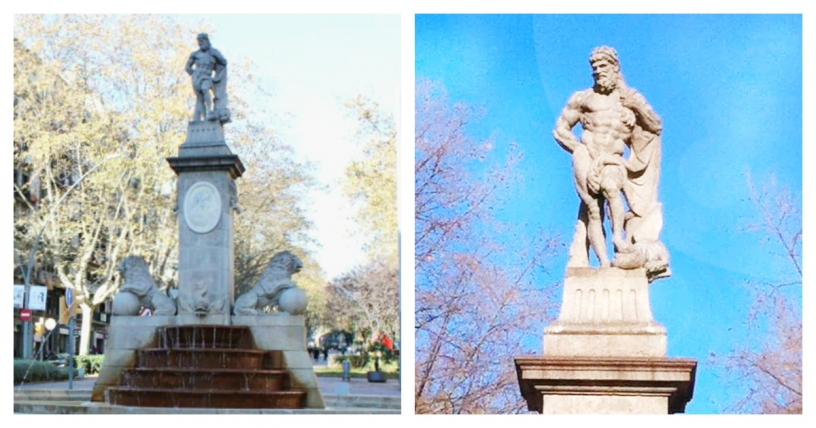
Not to be confused with Font d'Hèrcules by Gaudí, this was the first monumental fountain in Barcelona and was built close to Parc de la Ciutadella. At the same time, three other similar monuments of Greek gods were constructed there, but vanished when they started to urbanize the park. While the Hércules fountain was moved to Passeig de Sant Joan, unfortunately the other monumental fountains weren’t preserved.
Font de Neptú (1826)
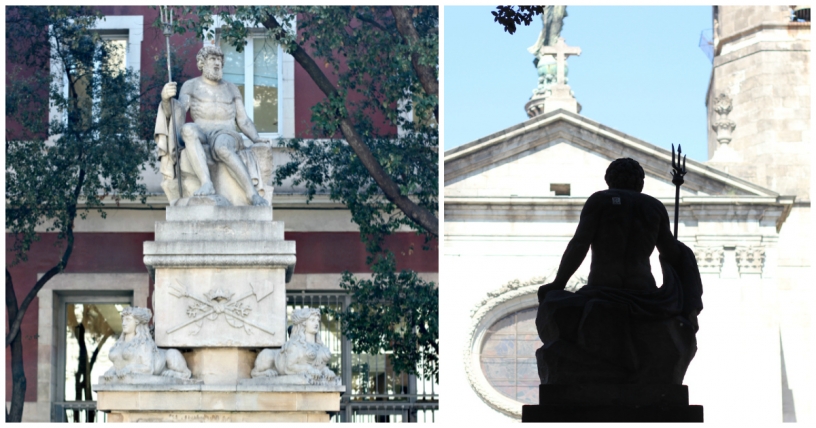
This fountain was built in 1826 close to Barceloneta beach. The god of the sea suits this place, sitting on a pedestal and holding a three-pronged spear in his hand while facing the Basílica de la Merced with four sphinges beneath him.
This monument was moved three times, until it finally stayed in Plaça de la Merced. There was criticism that a monument of a pagan god was situated directly in front of a Catholic church.
A Galceran Marquet Monument (1851)
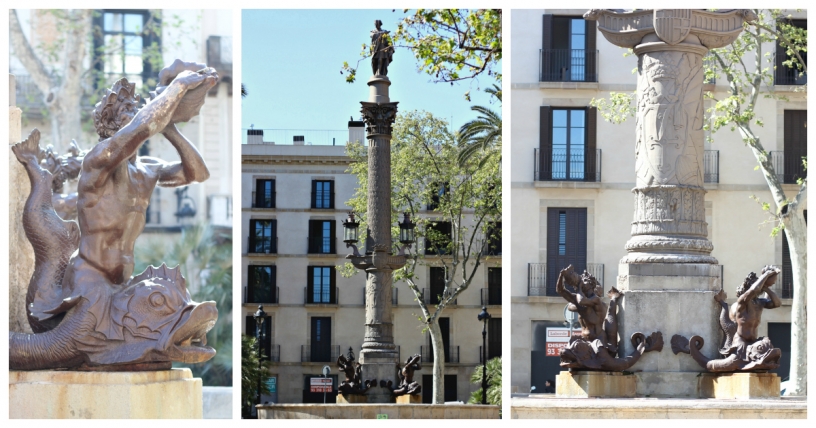
The first iron monument to be built in Barcelona is situated on Plaça del Duc de Medinaceli in the Ciutat Vella district. Formerly, there was a small square called San Francisco Square, but that was destroyed by a fire in 1835. After that, this monumental fountain was planned to decorate the newly built Plaça del Duc de Medinaceli. This land was donated by Duke Medinaceli and thus the sculpture was dedicated to him.
The sculpture on the top of the iron column wears warrior clothing, holding a sword in one hand and a rolled-up parchment in the other. The fountain is at the base of the monument and the water comes out of four mermen holding large conch shells.
Font del Geni Català (1856)
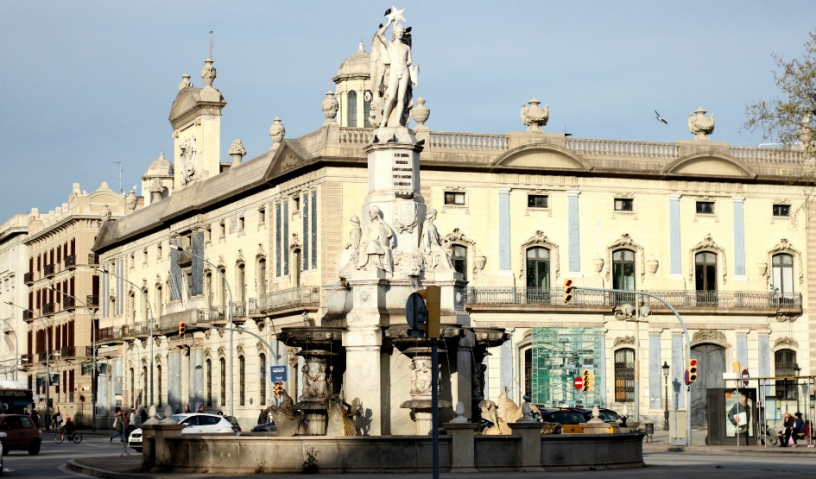
This huge fountain in the middle of a wide avenue pays homage to the Marquis of Campo Sagrado, who was responsible for providing water resources when a drought plagued Barcelona. The four statues on the pedestal represent the four Catalan provinces, and the four lion heads stand for the rivers Ebro, Segre, Ter and Llobregat. On top stands the 'Genius Catalan', a young nude person with wings, holding up a star that symbolizes progress.
Font de les Tres Gracies (1876)
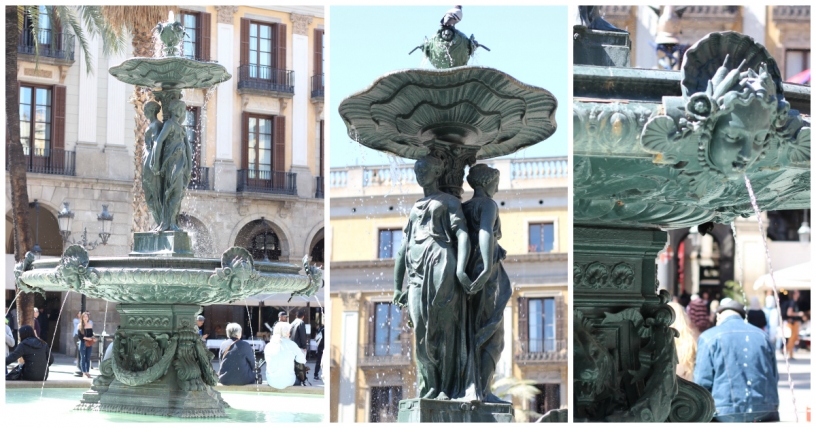
In the famous Plaça Reial — close to Las Ramblas and in the Gothic Quarter — it was decided to build a monument in the middle to honour Ferdinand II of Aragon. When Queen Isabella II visited Barcelona in 1856, the statue wasn’t ready yet, so they installed a prototype model made out of plaster. Apparently the citizens didn’t like it, because they destroyed it shortly after with stones. Only the pedestal remained, which also was destroyed in the revolution of 1868. They started a new project and this fountain was then inspired by the 'Three Graces' — love, beauty, and pleasure. It was recreated after a drawing of Louis-Tullius-Joachim Visconti, by Antoinne Durenne.
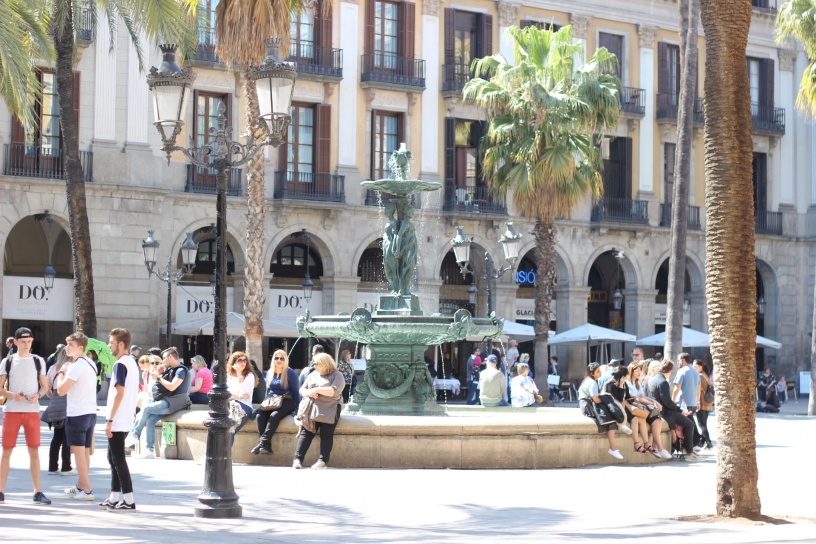
The fountain consists of a round pond that visitors use to sit and enjoy the square's vivid atmosphere. In the middle, the three graces stand hand-in-hand with one another around the pond. The water comes out of the top of the fountain and the third pond protects the graces from getting wet.
4. 1888 Barcelona Universal Exposition
The city went through a huge change when the international Exposition of 1888 was held in Barcelona. Cultural, economic, artistic and many other alterations that not only brought wealth to the city, but also improved its appearance in many ways.
Cascada del Parc de la Ciutadella (1875-1888)
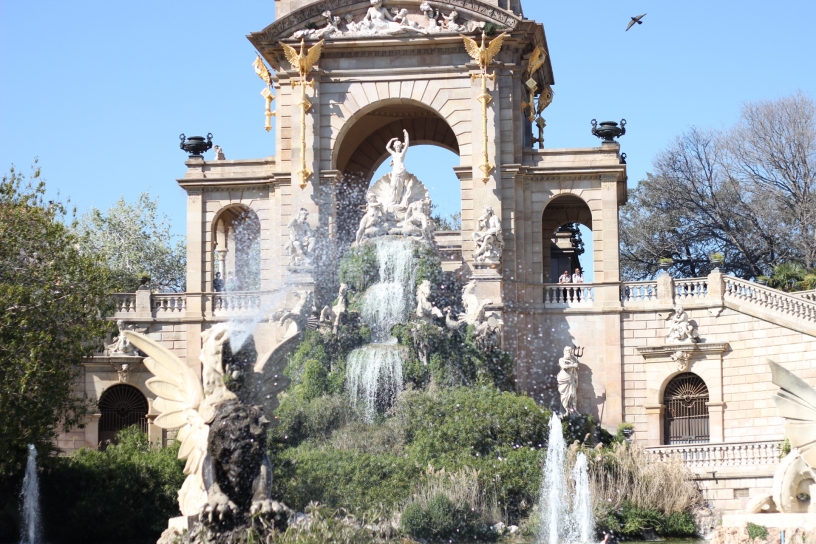
After King Phillip V conquered Barcelona during the War of Succession, he built Europe’s biggest fortress, which was part of his plan to subject Barcelona to his rule. Over time, the citizens associated the fortress with hate and started to break it down. During the Glorious Revolution of 1868 it was fully destroyed.
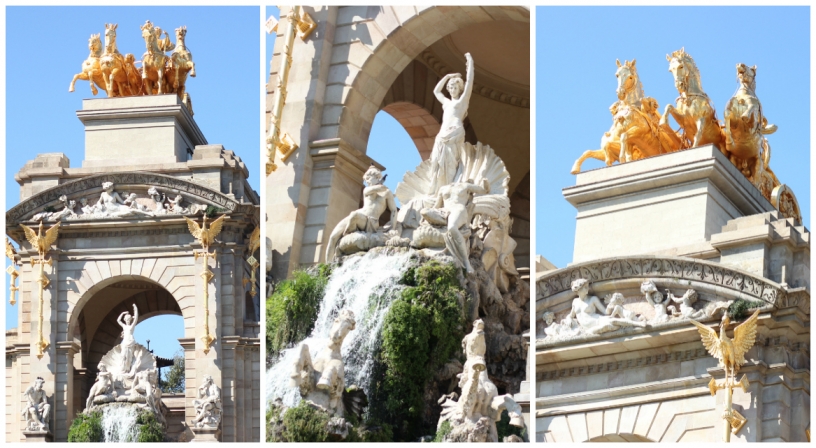
Between 1875 and 1888, the big and beautiful Parc de la Ciutadella was built right upon that same place. The waterfall was designed by Josep Fontserè with the help of Antoni Gaudí. The architectural ensemble has the form of a triumphal arch with two pavilions on its sides. The two lateral staircases permit you a more detailed view of its sculptures. The monument stands out for its sculptural extravagance, in which several of the best sculptors of that time took part in producing sculptures like Amphitrite, Neptune, Leda and Danae — just a few of the many wonderful pieces on this monument.
Font de Canaletes (1892)
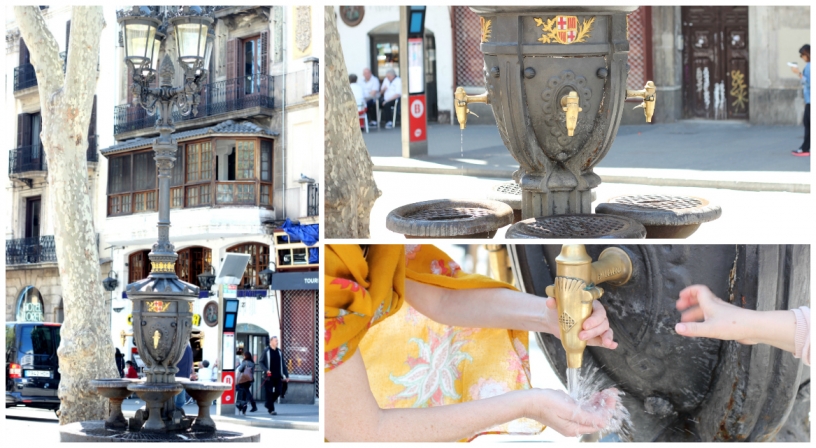
This fountain is situated directly on Las Ramblas, where thousands of people pass through daily. Many groups choose this place as their meeting point, such as tourists, school classes and fans of FC Barcelona. If you want to visit and take some nice pictures of this fountain, be ready to wait because you won't be able to see it through the crowds right away. We had to wait a long time until we could get some pretty pictures for you. ;)
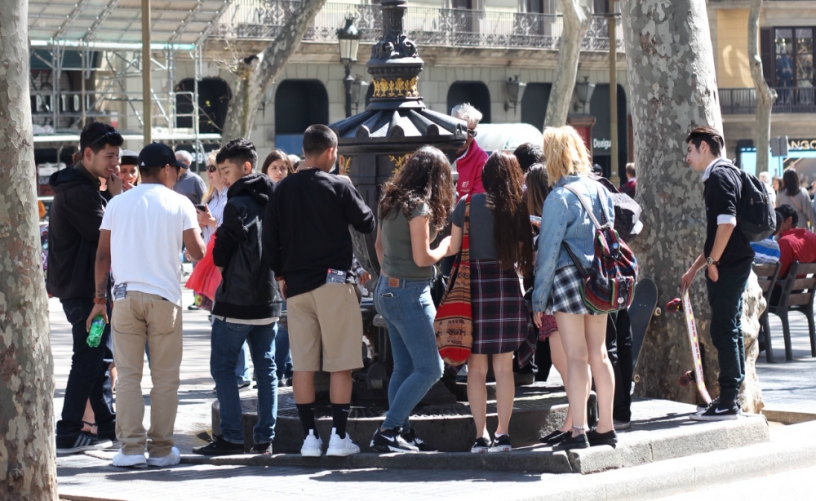
It was built in 1892 with a design by Pere Falqués. The fountain came from a deposit located in the San Severo Tower of the old medieval wall, which supplied the area around Las Ramblas and Raval. With the demolition of the walls in the 19th Century, the old fountain disappeared and two temporary iron fountains were installed in its stead. In 1888, the City Council agreed to replace it with a new fountain, which is now the Font de Canaletes that you can visit today.
5. Twentieth Century
Park Güell Dragon Fountain and Monument (1902-1914)
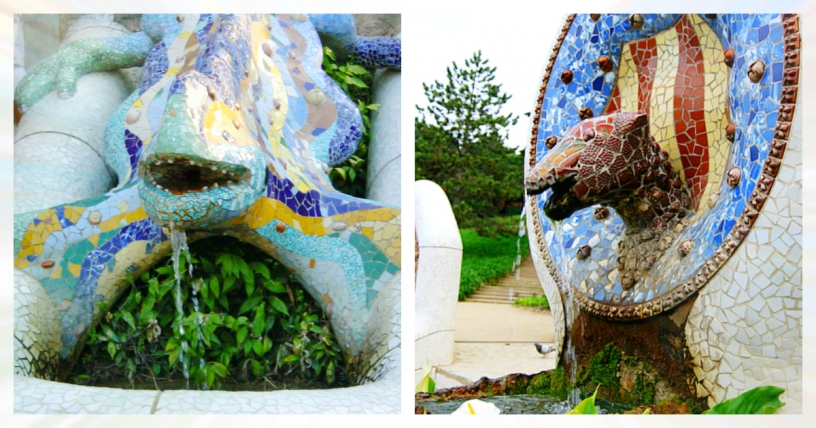
In 1914, the construction of Park Güell was finalized; designed by Antoni Gaudi and financed by Eusebi Güell. The stairway and these colourful sculptures that function as small fountains along the bannisters, became symbols of the park and stand for the Catalan Countries (Països Catalans).
Doctor Robert Monument (1910)
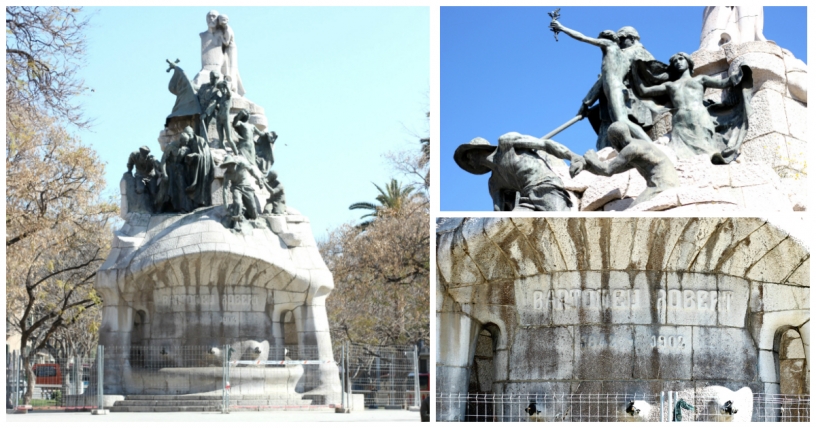
This monument was dedicated to the Catalan physician Doctor Robert. It was initially situated in Plaça de la Universidad. During the Franco dictatorship, it was removed and stored in a warehouse. In 1977, it was restored and put up in Plaça de Tetuan in the Eixample district where it makes a nice little place with benches to enjoy the sun, and playgrounds for the children. The base is a fountain with the name, birth and death date of Dr. Robert engraved on it. The frontal sculptures are made from bronze and stand for all kinds of people — like workers, politicians and doctors. On top stands Doctor Robert and a representation of Glory who is giving him a kiss.
Fountains of the Eixample District
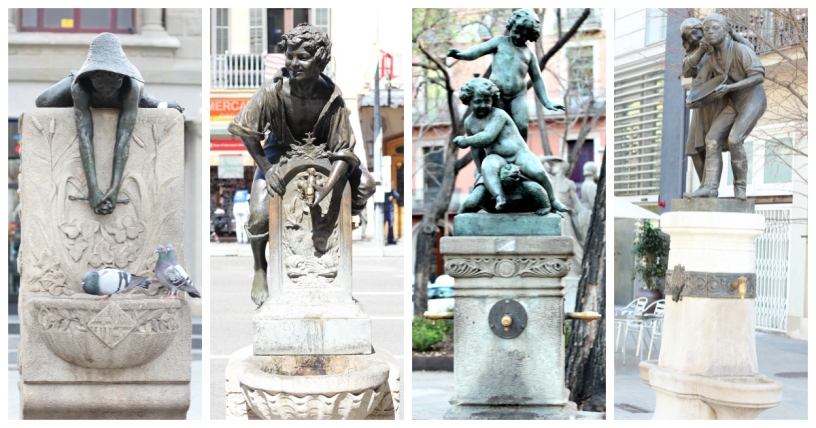
Numerous smaller fountains were installed around the Eixample district during the 1910s and 1920s, promoted by the Eixample Commission, which held several competitions to place various ornamental fountains. In the picture, you can see some examples of the fountains that were placed all over Eixample, including Font de la Granota, Font del Trinxa, Font de la Tortuga and Font de la Palangana.
6. 1929 Barcelona International Exposition
Another exposition was held in Barcelona, but this time it took place near the area of Montjuïc. Through this event, some of the most famous fountains and monuments of Barcelona were built and are now popular tourist attractions.
Plaça Espanya Monumental Fountain (1929)
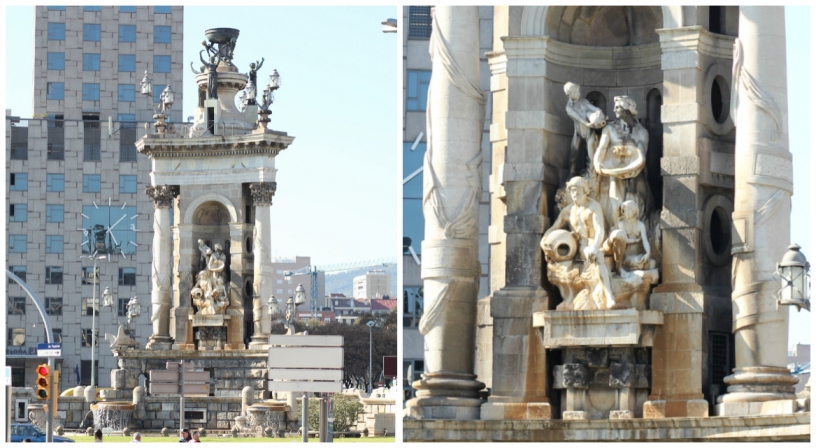
This monument was designed by Josep Maria Jujol and became one of the most important monuments during the 1929 Barcelona International Exposition. It combines many poetic elements of Spanish culture, and the sculptures were built by multiple artists to represent various concepts such as rivers, fruits, religion, heroism, arts and more.
Magic Fountain of Montjuïc
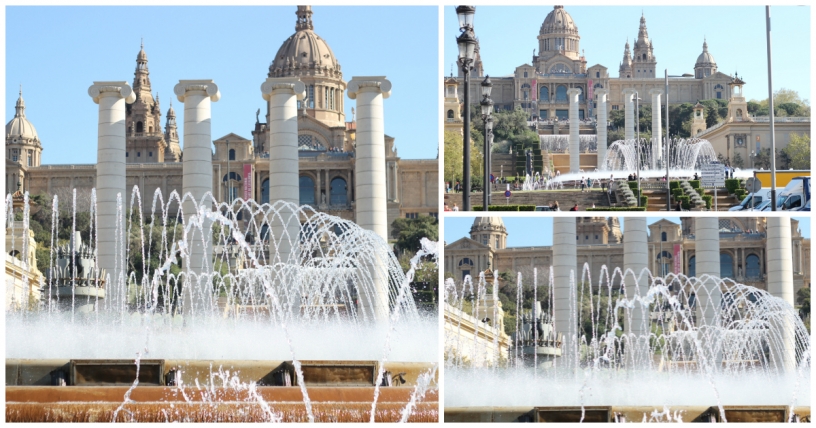
This is the most visited fountain in Barcelona and was designed by Carles Buïgas, built for the 1929 International Exhibition. It is situated at the foot of the Palau Nacional building.
The four columns you can see above it symbolize the red stripes of the Catalan flag. They were destroyed in 1928 by the dictator Miguel Primo de Rivera, before being rebuilt in 2010.
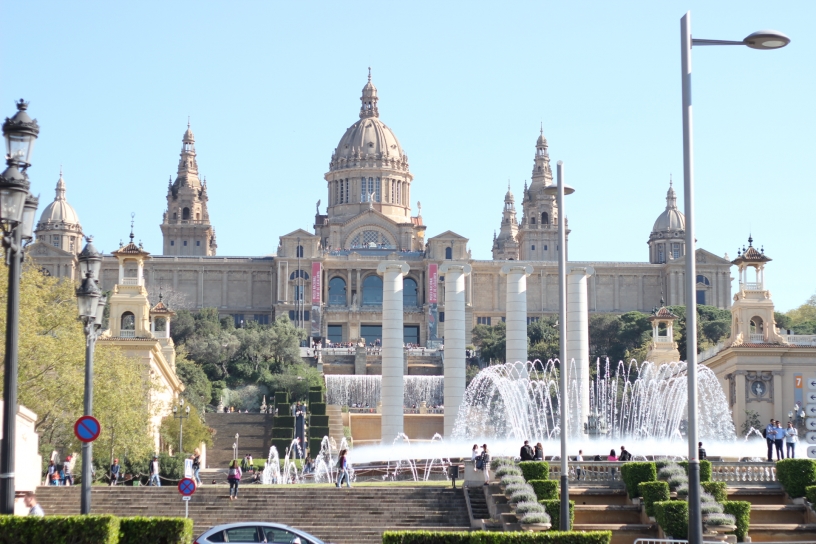
Three-thousand people worked on Buïgas's plan and it was finished one day before the exhibition. After the Spanish Civil War, it was severely damaged and had to be restored again. During the 1980s, they decided to accompany the fountain's light show with music and completely restored it in anticipation of the 1992 Summer Olympics. You can watch the fountain’s wonderful show for free.
Font dels Sis Putti (1926)
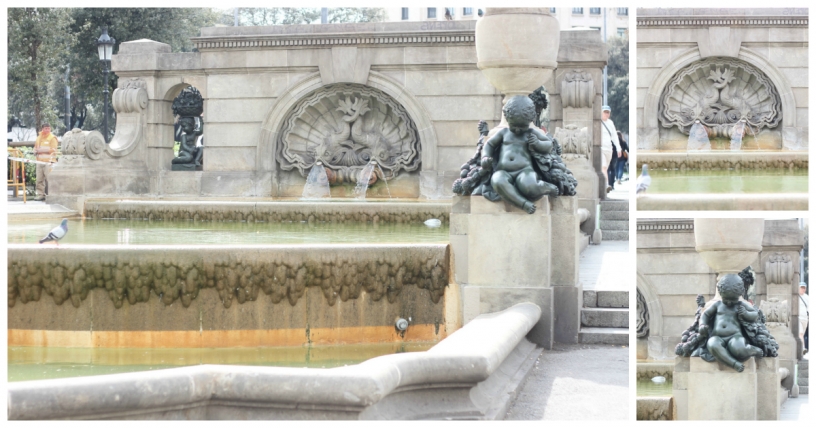
Plaça de Catalunya was also affected by the international exhibition and has since become one of the most important places in Barcelona. A public competition was organized in 1927, as a result of which 28 sculptures were installed, including the Font dels Sis Putti. It was designed by Jaume Otero. It's a fountain with a waterfall, decorated with six figures of putti (or cherubs), four around the fountain and two under the upper arches. The fountain represents the birth of the goddess Venus, with the two fishes that are intertwined with each other.
Excursions in Barcelona
To make the most of Barcelona and fill your trip with unforgettable experiences and emotions, we offer you the excursions through the Catalan capital organized by our friends - the GetYourGuide team. Choose your excursion and fall in love with Barcelona:
7. Pre-Civil War and Franco Dictatorship
Font del Carme (1931)
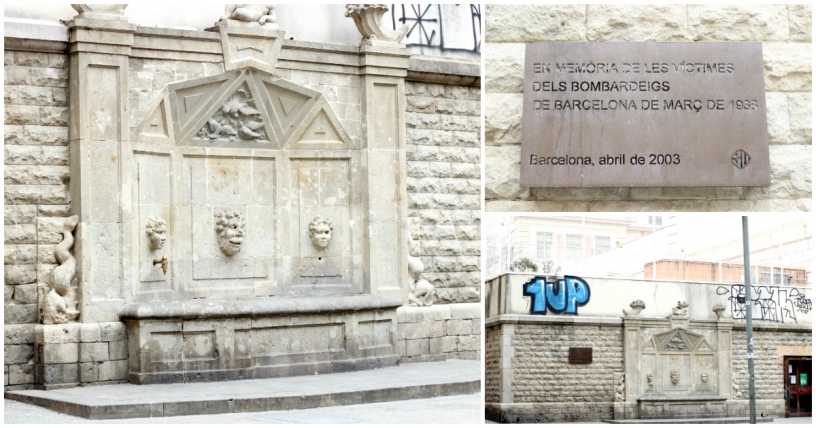
The Font del Carme was the only one created during one of Spain's most unstable periods — a period leading to critical political events such as the Spanish Civil War and dictatorship. This fountain is attached to the Milà i Fontanals School and is similar to other neo-gothic fountains. Three mascarons are placed in the middle, which originally had water pouring out of their mouths. Other decorations can be found on the top and sides of this stone fountain.
Passeig de Gràcia Fountain (1952)
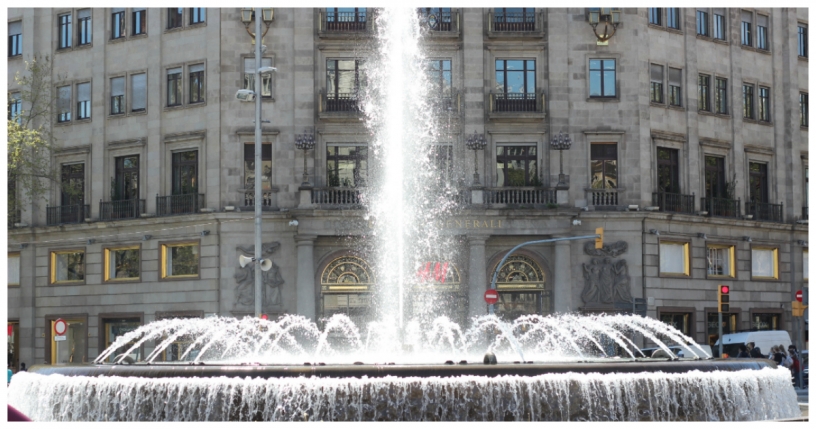
In 1952, a monumental fountain made by Josep Soteras was installed at the crossroads of Gran Vía and Passieg de Gràcia, not only to regulate the traffic, but also to decorate this popular avenue. Today, you can find famous shops like H&M and Zara all around the fountain.
Plaça de Catalunya Fountains (1959)
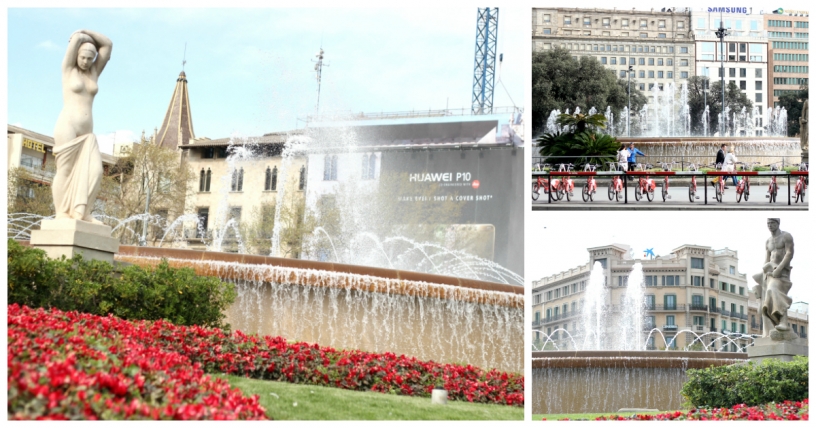
In 1959, Fernando Espiau Seoane designed two giant fountains on the upper terraces of Plaça de Catalunya, close to the many statues built before. At night these fountains light up.
8. The Olympics Games
The 1992 Olympic Games had another huge impact on Barcelona's appearance as more beautiful fountains and statues were built to prepare the city for the games. Most of the Olympic fountains were built close to the port, in Poblenou and around the Montjuïc area.
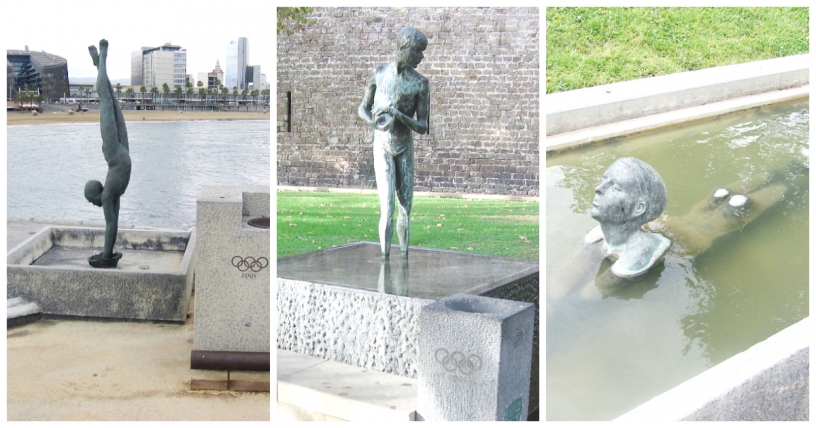
Eight fountains with young boys playing in the water were built by the sculptor Juan Bordes. The ones you can see in our collage, from left to right, are Capbussament in Poblenou, Pilota on Avinguda del Paral·lel and Busseig on Avinguda de Xile.
9. Twenty-first Century
The 21st Century hasn't brought any particularly major change to the city so far. The focus has been on innovation and progress. The main change came from the 2004 Universal Forum of Cultures, when complete neighbourhoods were renovated and many new places, squares and parks were created.
Plaça de Lesseps
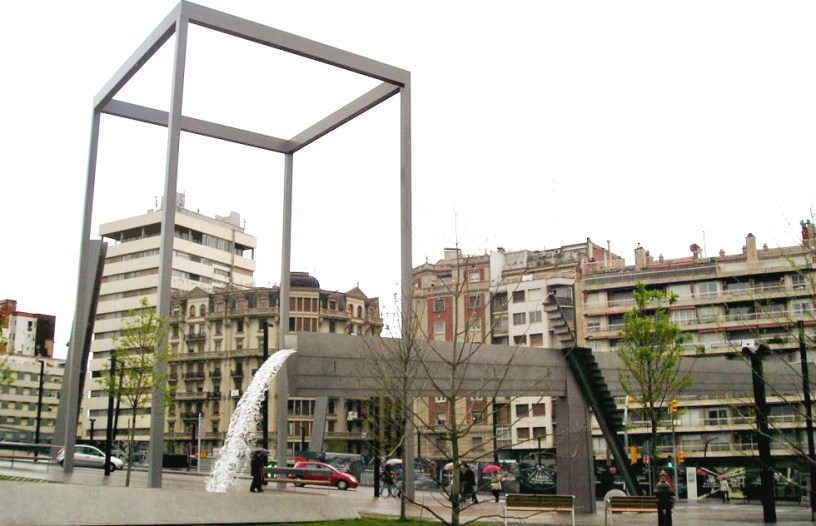
This fountain is dedicated to the French engineer who created the great canal that links the Mediterranean Sea with the Red Sea, Ferdinand de Lesseps. His significance in Barcelona is that he offered protection to those fleeing from the fighting that culminated in the 1842 Bombardment of Barcelona. The metal canal crosses the whole square and carries water into a pool.
This square's urbanization was criticized by neighbours, with the metal constructions labelled as confusing, cold and aggressive. However, this square has high recognition value and the urbanization also serves to regulate traffic as well as facilitate the neighbours' coexistence with plenty of benches and terraces.
Did you know that there was so much history behind each fountain? Each tells a tale of the big events that shaped Barcelona into the city we know today. Which one was your favourite? Let us know in the comment section below!

